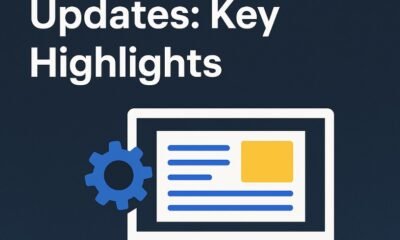Business
An Overview of Bubble Chart Use Cases

Visualizing data is crucial to understanding complex patterns and trends that simple tables fail to demonstrate. One of the graphs that makes data digestible, not only to data wizards but also to stakeholders with little statistical background, is the bubble chart. In this article, we unpack the fundamentals of these charts and explore bubble chart use cases in various sectors.
Understanding Bubble Charts
Bubble charts are a type of data visualization that displays three dimensions of data. Each entity with its triplet (v1, v2, v3) of associated data is plotted as a disk that expresses two of the values through the disk’s xy location and the third through its size.

Being a variation of the scatter plot, bubble charts provide a way to add an additional visible dimension to the plot. Thus, they become more informative at the cost of a certain loss in readability, especially with larger datasets.
Bubble charts carry an aesthetic appeal that helps the viewer understand data more intuitively. Although they can display a great amount of information, bubble charts, like other data visualization forms, require careful interpretation.
Practical Applications of Bubble Charts
Companies widely apply bubble charts in performance measurement, risk analysis, and strategic planning. This type of chart provides a visually intuitive tool that makes it easier to identify trends, correlations, and outliers to aid with data-informed decision-making processes.
In marketing, bubble charts can visualize the performance of different marketing campaigns. Bubbles representing each campaign can depict the cost (x-axis), the number of customer impressions (y-axis), and the conversion rate (size of the bubble).
The healthcare industry also leverages bubble charts for medical research. It can visually depict the relationship between patients’ age (x-axis), treatment cost (y-axis), and recovery rate (size of the bubble).
From education and IT to finance sectors, the application of bubble charts is pervasive. However, as we move towards an era dominated by data, the importance of bubble charts is set to rise even further.
Significance of Bubble Charts in Data Visualization
In the realm of data visualization, bubble charts hold a significant spot. Their ability to manage multidimensional data in a visually intuitive manner sets them apart from other chart types like bar graphs or line diagrams.
Bubble charts accentuate correlations and patterns in the data that may otherwise go unnoticed, making them tools of choice for analysts intending to convey complex data narratives in an easily digestible format.
They allow for a holistic overview of the data landscape, bringing the subtle undercurrents to the fore. This makes them perfect tools for presentations and reports where impactful visual aids can influence decision-making.
Their flexibility to accommodate different types of data makes them universally applicable in various fields, from economics and marketing to medicine and environmental studies.
Applying Bubble Charts for Business Intelligence Solutions
In the domain of business intelligence, bubble charts are leveraged extensively to solve complex data puzzles. They provide a compelling view of various performance indicators, reflecting correlations and trends.

For instance, a bubble chart in strategic planning can reveal a relation between consumer preferences, market trends, and sales of a product line. This consolidated view can help drive business decisions.
Financial analysts use bubble charts to convey data-rich insights about the market dynamics in a visually appealing manner.
Considering how it showcases voluminous data in an accessible format, it remains an indispensable tool in business intelligence discussions and strategic meetings.
Bubble Charts for Medical Research
The medical realm also perceives the potential of bubble charts. It utilizes these charts to represent large volumes of patient data, drawing critical insights into complex medical scenarios.
Bubble charts can illustrate the correlations between a patient’s symptoms, diagnosis, treatment plan, and recovery graph over time. This helps in making well-informed decisions about medication, recovery strategies, and ongoing medical practices.
Moreover, in medical research, it aids in visualizing patterns in big data, such as the prevalence of a certain disease over time and in different geographical areas.
Thus, bubble charts provide a much-required tool for medical professionals and researchers to explore, understand, and share data-rich medical insights.
Altogether, bubble charts play a pivotal role in our data-driven world. Their multidimensional data-conveying capacity sets them apart, making them an influential tool in business, research, and beyond. As the future of data visualization unfolds, their importance is set to escalate, underlining a need for better understanding and apt utilization.













